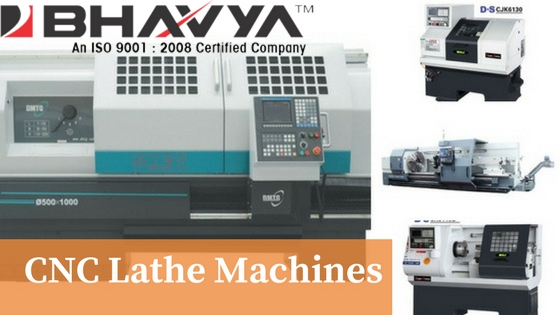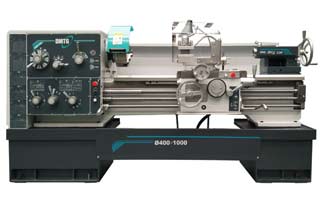Lathe machines are mechanical devices used to rotate a workpiece while various cutting tools are applied to shape, cut, or drill it. The workpiece is clamped securely and rotated on its axis, allowing the cutting tools to remove material and create the desired shape. Lathe machines are widely used in industries such as automotive, aerospace, construction, and furniture manufacturing.
Working Principle of Lathe Machines
The working principle of lathe machines is based on the rotation of a workpiece and the application of cutting tools. The workpiece is secured between the headstock and tailstock of the lathe. As the lathe rotates the workpiece, the cutting tools, such as turning tools, drills, or milling tools, are brought into contact with the workpiece to shape or cut it. The movement and speed of the cutting tools can be controlled manually or through computer numerical control (CNC) systems in modern lathe machines.
Precision and Accuracy
Lathe machines provide high precision and accuracy, ensuring that the final products meet the required specifications. This precision is essential for industries that demand tight tolerances and quality standards.
Considered the mother of all machine tools, the lathe is a crucial component in every machine shop and manufacturing facility. It can create an incredible number of different objects in a short amount of time. Screws, baseball bats, gun barrels, locomotive wheels, camshafts and more can be produced with a lathe.
The basic structure of a lathe includes a headstock, bed, carriage and tailstock. Better quality machines have broad bearing surfaces (slide-ways) to reduce vibration and ensure accuracy. Lathes are used for various types of machining operations, including cutting, drilling, knurling, deformation and facing. They can also be used for threading and grooving.
Lathe machines are designed to offer a high degree of accuracy. This makes them ideal for creating complex, precise parts. They can also help manufacturers improve the quality of their products. However, these machines must be properly maintained to maintain their accuracy.
The accuracy of a lathe machine depends on a variety of factors, including the operator’s skill level. In addition, there is a certain amount of backlash that can occur. This can cause the diameter of a part to vary along its length. Therefore, it is important to consider all of these factors when selecting a lathe machine for your business. Lathe machines can be used for a variety of purposes, from small jobs in a garage to large projects in an industrial setting.
Durability and Versatility of Lathe Machines
A lathe machine is a versatile tool that shapes a wooden or metal product by rotating it around an axis with a fixed cutting tool. This tool removes the unwanted materials from the product to create the desired shape. It is used in a variety of manufacturing industries including glass processing, thermal spraying, wood tuning of various artistic products and metal fabrication.
The lathe has many different parts including the headstock, tail stock, carriage and saddle, cross slide, compound rest, tool turret, and chuck. A chuck can hold workpieces of any size, and it is important to choose one with the right capacity for your needs.
Some machines have additional features, such as a sleeve or tailstock for support of long and slender parts. Other options include a spindle through-hole or bar stock capability. The rake angle of the cutting edge is another factor that can influence durability. A high rake angle increases sharpness but decreases strength.
Power of Lathe Machines
Lathe machines can handle a wide variety of machine operations. They’re used for turning, knurling, boring, drilling, reaming, sanding and more. They’re ideal for anything with a cylindrical shape.
They can also cut grooves into metal pieces. The width of the groove can vary, and it’s possible to make helixes and helical grooves on a workpiece. This allows manufacturers to produce a wide range of products, including pump parts, gun barrels, wooden bowls and cue sticks.
However, you need to keep your lathes in top condition. Regular cleaning, clearing chips and checking the oil levels, coolant and airflow are all crucial to maintaining the machine’s precision and durability. Without proper maintenance, a lathe machine can produce inaccurate results that impact production and cost. Moreover, improper care will reduce the life expectancy of the machine.
With different types of lathe machines and a wide range of cutting tools available, these machines offer versatility in machining operations. They can handle various materials, shapes, and sizes, accommodating different manufacturing needs.
Lathe machines enable efficient and productive manufacturing processes. They can perform multiple operations on a single workpiece, reducing production time and increasing overall productivity.
By automating processes and minimizing material waste, lathe machines contribute to cost-effectiveness in manufacturing. They help optimize resource utilization and streamline production, leading to cost savings for businesses.







